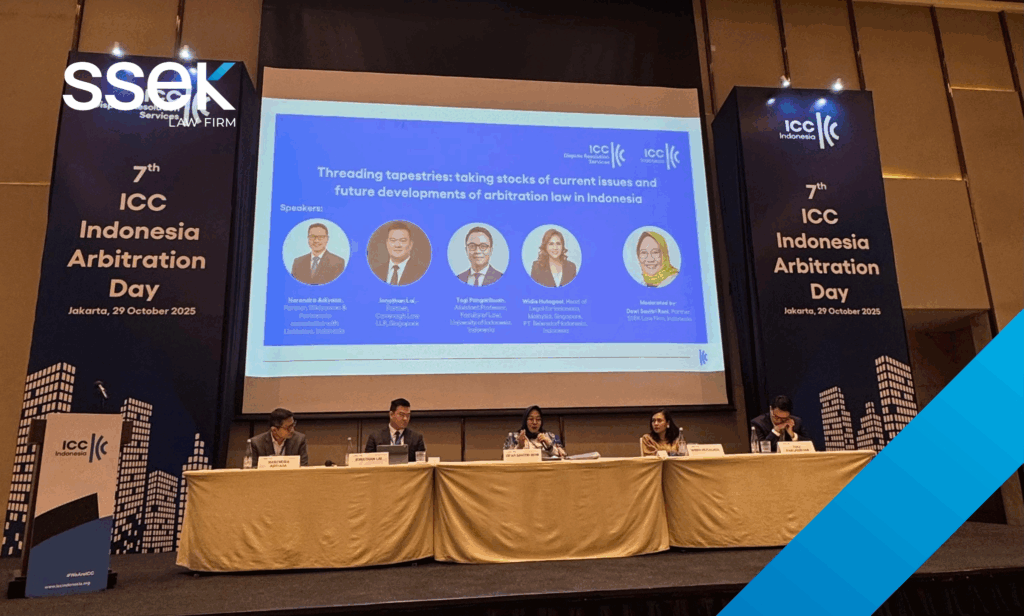Indonesia’s Ministry of Environment (“MOE”) has issued a significant new regulation aimed at strengthening environmental safeguards in the mining sector. MOE Regulation No. 20 of 2025 concerning Standard Criteria for Environmental Damage to Land Resulting from Mining Operations and/or Activities (“MOE Reg. 20/2025”) came into force on October 23, 2025.
The regulation establishes clear standards for land protection and sets out ongoing monitoring and reporting obligations for mining companies.
Three Key Criteria for Environmental Protection
MOE Reg. 20/2025 identifies three main criteria for determining when land is considered environmentally damaged as a result of mining activities. They are:
Physical criteria, which include:
- Ex-mining areas that have not undergone environmental management for more than one year.
- Topsoil stockpiles amounting to less than 75% of the required volume.
- Slopes that exceed safe angle or height thresholds.
- Erosion rates above 180 tons per hectare per year.
- Landslides occurring within mining zones.
- Poor water-flow management leading to runoff and sedimentation issues.
- Groundwater levels dropping more than 60% from the baseline level.
- Mining activities conducted within 500 meters of rivers, lakes or settlements.
- Unauthorized mine openings or any alteration of river flow without proper approval.
Chemical criteria, which relate to conditions that may cause chemical contamination of land. These include the presence of potentially contaminated rocks that may contribute to land degradation with pH levels outside the safe range (below 4 or above 11), as well as mine voids where the pH of the water is not within the acceptable range of 6 – 9 and the water quality has not yet reached a stable condition.
Biological criteria, which address the condition of ecosystems surrounding mining areas. These include vegetation around water bodies falling below 90% coverage, revegetation areas with less than 80% coverage or a survival rate that declines by more than 20% within a three-year period, and the absence of measures to prevent habitat fragmentation, such as ecological corridors, bridges or tunnels.
Monitoring Requirements
Mining companies must comply with comprehensive monitoring requirements, which are divided into two stages: monitoring planning and monitoring implementation.
At the monitoring planning stage, mining companies must collect and prepare a minimum set of documents. These include:
- the company’s environmental approval;
- any approval for the use of forest areas;
- the applicable mining business license;
- a permit for altering drainage channels;
- a geotechnical assessment;
- studies identifying rocks with the potential to generate acid mine drainage;
- a hydrogeological assessment;
- a map showing the planned and actual mining activities; and
- a layout map of the water management system, from the operation area through to the settling pond or wastewater treatment installation (IPAL).
In addition, mining companies must procure the necessary monitoring equipment and prepare an annual document detailing their planned monitoring activities for land-related environmental impacts.
Mining companies are also required to carry out environmental monitoring on a regular basis, with semi-annual monitoring for parameters such as topsoil conditions, slope stability, erosion levels, landslides, surface-water flow, groundwater levels, distance of mining activities from sensitive areas, mine openings, the presence of potentially pollutant rocks, and biodiversity. Annual monitoring is required for ex-mining areas, vegetation surrounding water bodies or coastal areas, and vegetation and revegetation coverage.
Mining companies must submit their monitoring results to the MOE or relevant Governor, in accordance with their respective authority. Even when no environmental damage is detected, mining companies remain obligated to undertake preventive environmental measures. Where environmental damage is identified, they must implement appropriate mitigation and/or restoration measures in the affected areas.
Conclusion
MOE Regulation No. 20 of 2025 underscores the need for mining companies to closely monitor land integrity, maintain complete and accurate documentation, and conduct regular environmental assessments.
Companies must report their monitoring results, implement preventive measures even in the absence of damage, and carry out mitigation or restoration when impacts are identified.
These obligations reinforce the importance of mining companies taking proactive measures to safeguard land conditions, strengthen compliance practices and ensure responsible environmental management across their operations.
This publication is intended for informational purposes only and does not constitute legal advice. Any reliance on the material contained herein is at the user’s own risk. All SSEK publications are copyrighted and may not be reproduced without the express written consent of SSEK.








